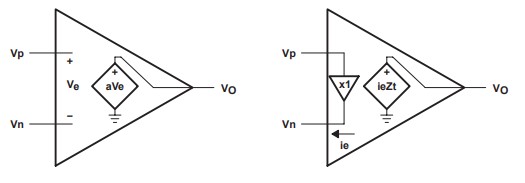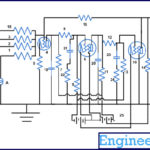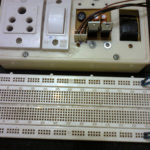Current feedback (CFB) operational amplifiers (op amps) and voltage feedback (VFB) op amps have almost as many similarities as differences. CFBs and VFBs both have inverting and non-inverting inputs, a signal output, inputs for positive and negative voltage supplies and use feedback and gain resistors to stabilize circuit operation and set circuit gain. That can make it challenging to tell the difference, since the differences are invisible from the outside.
The impedances of the inputs are the primary differences: VFBs have symmetrical high-impedance inputs while CFBs have asymmetric inputs. Differences in the inputs results in differences between the error signals used by VFB and a CFB op amps. A VFB op amp uses an error voltage while a CFB op-amp uses an error current.

There are additional differences between CFBs and VFBs, some of which are discussed below. The bottom line is that CFBs and VFBs have different performance characteristics and are suited to different applications:
CFB op amp characteristics include:
- Asymmetrical inputs
- Lower open loop gain and DC accuracy
- Higher offset voltage
- Inverting input impedance is low, non-inverting input impedance is high
- Input bias currents not as low as VFB or as well matched
- Fixed feedback resistor needed for optimum performance
Making CFB op amps are more suited for applications that need:
- Relatively constant bandwidth for different gains;
- Ultra-high bandwidth and slew rate with the lowest distortion;
- And relatively simple filter implementations such as Sallen-Key active filters.
VFB op amp characteristics include:
- Balanced input impedance
- Flexible feedback network
- Rail-to-rail inputs and outputs available
- High open loop gain and DC accuracy
- Low offset voltage available (can be <20 µV)
- Low bias current available (can be <200 fA)
Making VFB op amps are more suited for:
- Applications that need flexibility in the feedback network;
- High precision, low noise and low bandwidth applications;
- Single-supply application;
- And for use in complex active filters.
More on CFB and VFB differences
The ideal closed-loop gain equations for the inverting CFB and VFB op amps are identical. But in practical applications these op amps depart from ideal performance in different ways, since the assumptions used to arrive at the closed-loop gains are more complex for CFBs. The degree that these op amps stray from the ideal closed-loop gain equations is dependent on the validity of the assumptions. For VFB op amps, the only assumption is that the direct gain is very high. On the other hand, there are two assumptions made when using CFBs; the transimpedance is very high and the output impedance of the output buffer is very low. Since meeting two criteria is more difficult than meeting one, CFBs typically stray from the ideal more than VFBs.
VFB op amps can employ a number of compensation techniques to prevent instability, and usually there are not specific limits on the choice of resistors when using VFBs. On the other hand, designers using CFB op amps cannot freely choose the values of the feedback resistors. Datasheets for CFB op amps generally specify the feedback resistor values to be used at different gain settings, which enable the widest bandwidth with the most stable phase conditions.
The closed-loop bandwidth of a CFB op amp is relatively independent of the gain resistor; It is determined by the value of an internal capacitor and the (external) feedback resistor. As a result, CFBs are well-suited for programmable gain applications which require a gain-independent bandwidth. VFBs are more often seen in inverting amplifiers. Inverting amplifiers using CFBs are less often seen since the inverting input impedance is very low.
VFBs offer high open-loop gain, low offset voltage and low bias current which makes them an attractive choice for precision low-frequency applications. Many VFB op amps are available with rail-to-rail inputs and outputs that makes them suited for use in single supply applications.
VFB op amps are more suitable for active filter designs. CFBs offer superior bandwidth, slew rates and distortion specifications, but at the expense of lesser dc performance, noise considerations and the need for a fixed value feedback resistor.
In summary, while it is difficult to tell the difference, since the differences are invisible from the outside, the differences are many and they are important. As a result of the numerous performance differences between CFBs and VFBs, these two types of op amps are suited for different sets of applications.
You may also like:
Filed Under: Tech Articles, What Is






Questions related to this article?
👉Ask and discuss on Electro-Tech-Online.com and EDAboard.com forums.
Tell Us What You Think!!
You must be logged in to post a comment.